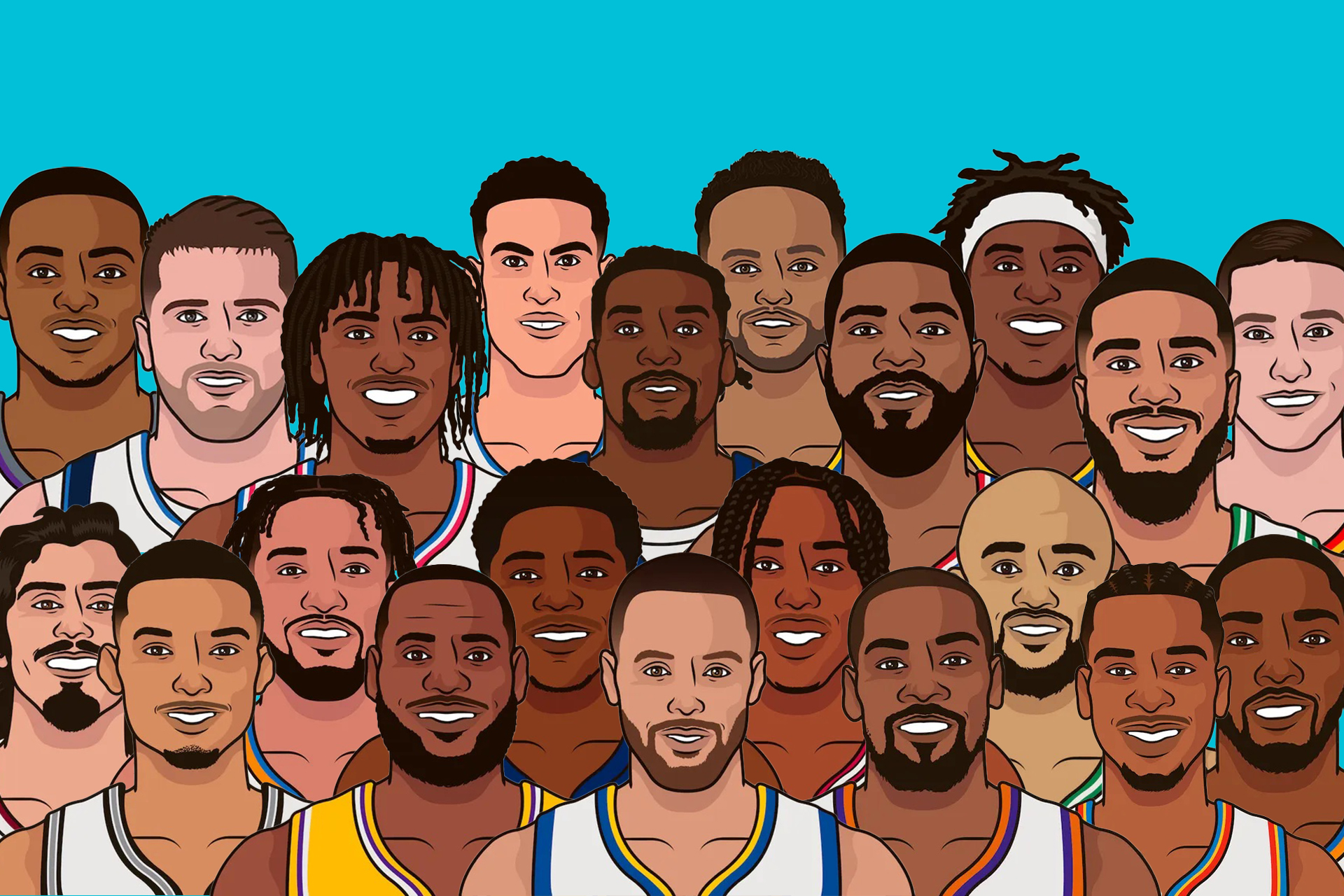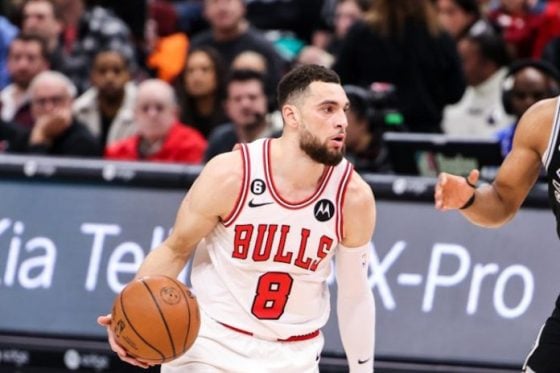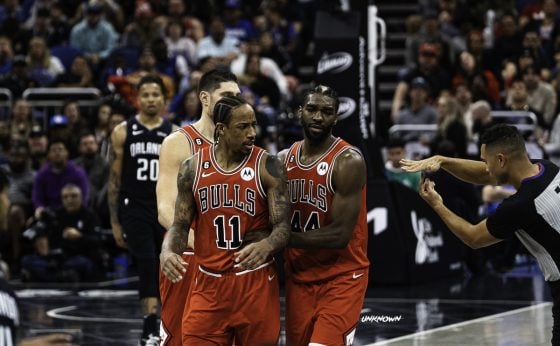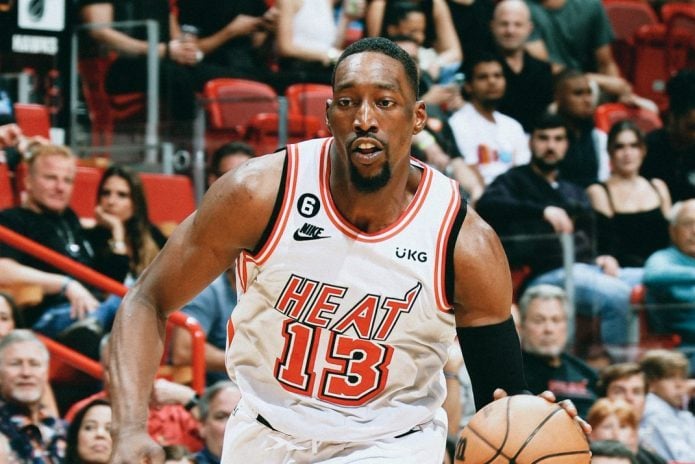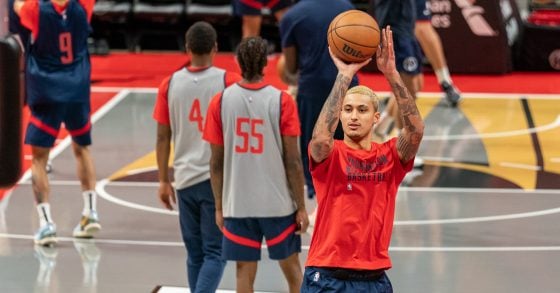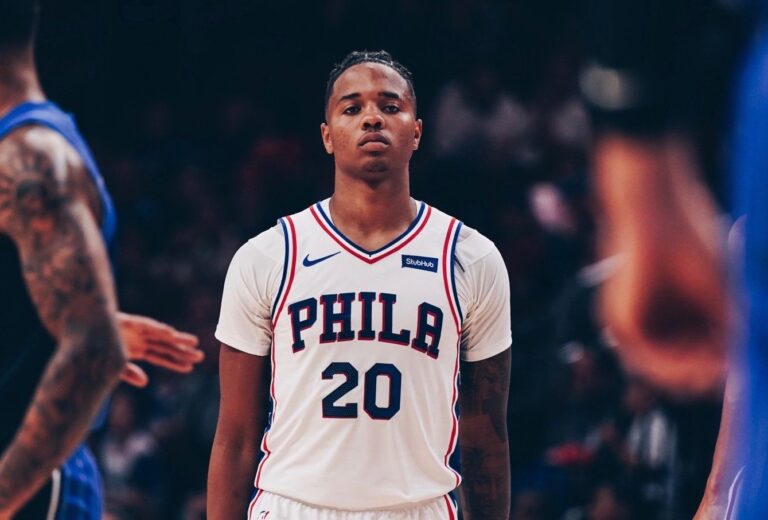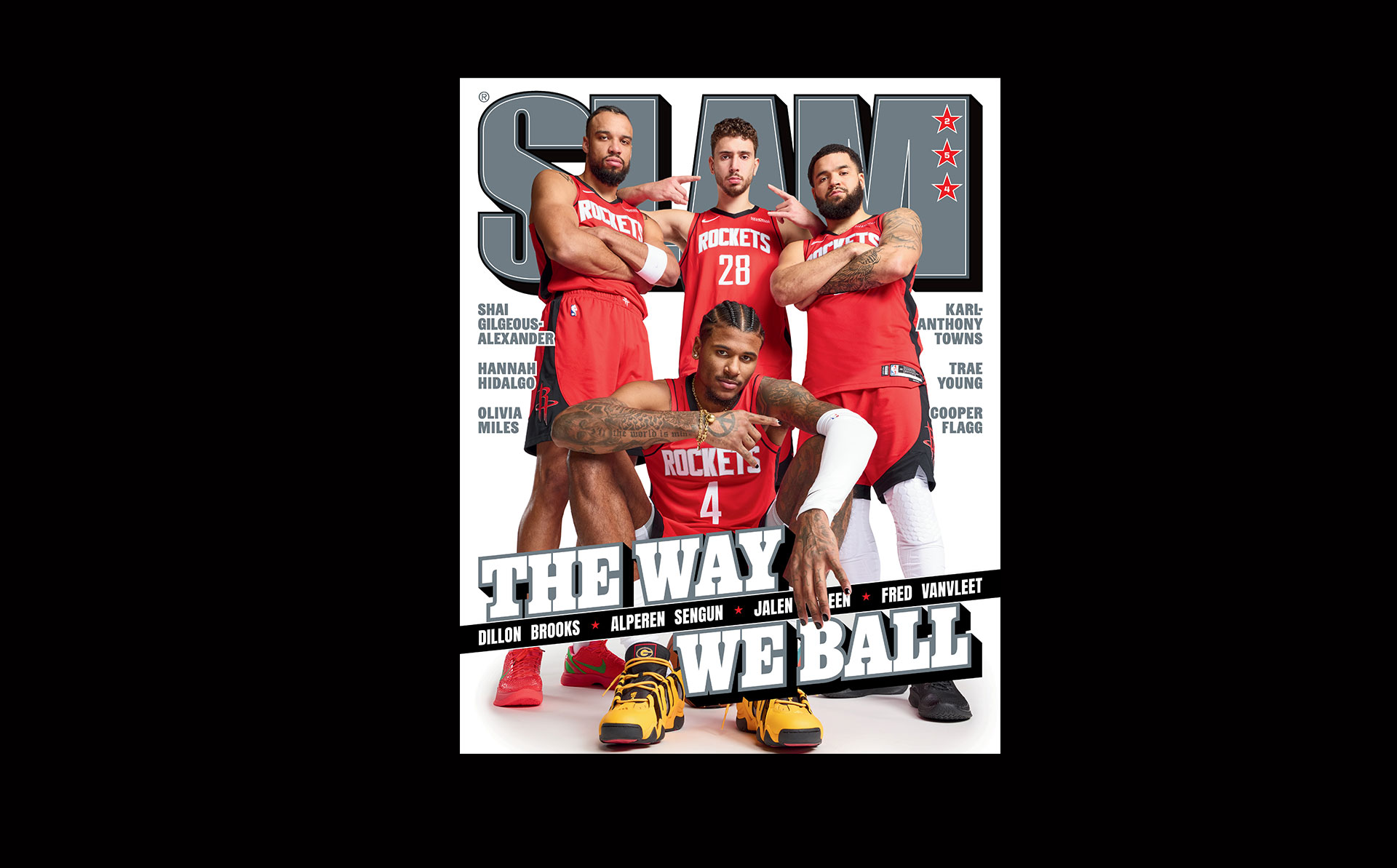Detailing The Story Behind StatMuse and the Rise of the NBA Muse Network
Every basketball friend group has at one point fallen victim to this conversation: name the most random NBA players you can think of. It’s a fun and endearing exercise that brings about all forms of nostalgia and historian-like knowledge. So what do Isaiah Joe, Jakob Poeltl and Julian Champagnie all have in common besides being heralded by small market fan bases? They’ve all got their own fan accounts.
Believe it or not, every single player in the NBA does.
Over the past few years, NBA Twitter has become filled with fan accounts dedicated to literally every player and organization within the League. We’re talking hundreds upon hundreds of accounts fueled by one sole purpose: amplifying the success of their chosen player or franchise.
Go ahead, go to the search bar and look up anyone from Stephen Curry to Xavier Tillman, put “Muse” at the end of their name, and you’re bound to find an account that’s posting about them on a daily basis—in some instances, several duke it out in reply threads for the “official” title. Aaron Wiggins, Josh Green, even G-League legend Andre Ingram all have accounts repping them with a passion. This shit is random, it’s weird, and it damn near doesn’t make any sense. All the while, they make memes, troll each other during matchups, are followed by All-Stars and rake in millions of impressions a week.
The collection of Muse accounts has seen legal action, led to social media careers by account holders and shaped an entire era of sports social media, for better or worse. Some folks think they’re the “downfall of NBA Twitter”, some love the added entertainment to scroll through on a nightly basis and some are completely oblivious to the supposed reason for the existence of the accounts: the statistical performance of the individual players.
“In a modern masculinity sense, it’s very cute to know that these kids, these teenagers, these adults, what have you, they’re real people and they’re talking about who they miss and who they enjoy. And that type of beauty is lovely and that’s why I enjoy it and am still involved in it,” the account holder behind SpursMuse said.
As accounts for the obscure 10th man on NBA rosters continued to arise this past season, we wanted to truly understand what a Muse account was. How do they get these vague yet specific advanced stats? Why are they beefing and cussing each other out? Is this a job? Do they get paid? Why does Mason Plumlee have a dedicated account posting about his nightly numbers? Where did this all come from?
For the past few months, we’ve been searching for answers. We reached out to and spoke with various Muse accounts to figure out how they started an account and to dish on the inner workings of the Network. We got on the phone with the founders of StatMuse to see if they’re even behind this phenomenon that uses their visual likeness (more on that later). And we might have gotten some answers.
Fan accounts on NBA Twitter are nothing new, but these Muse accounts are a different breed. Using StatMuse’s AI-powered sports statistic search engine, accounts fuel online discourse, banter and engagement plastered with cartoonish illustrations of players across the L. Any statistical feat that you could ever dream of gets posted on a nightly basis.
For the past two and a half years, the Muse Network has turned X—formerly known as Twitter—into a hotbed for some of the most obscure online sports beefs in recent memory. All the accounts may be tied to the sports stats company StatMuse, but that doesn’t mean everyone sees eye to eye. At the end of the day, this is hoops. Shit’s competitive.
For example, some individuals in the Muse Network noted that they weren’t on the best terms with KnicksMuse. The account holder has reportedly blocked several accounts from within the Knicks community. Last June, he got into a public beef with both DeerMuse and BucksMuse. Depending on who you ask, he’s left or been kicked out of the community’s over 70-person group chat after routinely butting heads.
He’s not the only one. Each account holds an unyielding loyalty to their team or player. Airing out grievances is a weekly occurrence as new pages enter the fold almost daily.
WiseMuse—short for James Wiseman—was going back and forth with an anime page in February when Marcus Morris Sr.’s account came flying in from the top rope to diss them for having an account dedicated to the Pistons center. The frequency of run-ins has coined its own definition, “Muse Beef.”
Back in 2014, Eli Dawson and Adam Elmore saw a new angle in the shared landscape between sports, statistics and software. The two founded StatMuse, a media company that focused on creating digestible stats content with the help of AI.
“If you go back to 2014 when Adam wrote the first line of code, Siri was out but you didn’t have the explosion of AI that you have today,” Dawson says. “So our fundamental bet was that this is gonna be the decade that humans start talking to computers. And once humans start talking to computers, it should transform the media experience where you can have this interactive, dynamic storytelling where whatever’s on your mind, whatever you want to learn more about, you can really drive that experience and all you have to do is ask.”
A decade ago you couldn’t type “Highest career playoff FG% by a player with 20+ MPG (minimum 15 games)” into a search bar and immediately get the figures back for DeAndre Jordan, Dereck Lively II and Rudy Gobert. You’d have to count through the games or pray someone else had already asked the question. Now StatMuse does it for you.
With boundless opportunities to explore statistical feats and anomalies, social media took it from there.
The phenomenon started in late 2021 and early 2022 with accounts like WarriorsMuse—now at 98.1K followers—and MavsMuse—now at 46.4K—arriving on the scene. Others followed that fall. Then the Network’s spontaneous nature came to fruition. Making an account for a perennial All-Star is one thing; you’ve got an unending stream of data and playing time to your advantage. Building an entire account for a role player like Zeke Nnaji or JT Thor—which actually exists—is a little absurd. But it kept happening.
“Once Stat Muse started getting a little bit more involved and started engaging with us a little bit more, I think it became something different,” says the SpursMuse account holder. (The SpursMuse account holder—and most of the other account holders quoted in this story—asked us not to print their actual names.) “But in the early stages, it was definitely just a rag-tag page. No structure, no organization. Just a social media account like any other guy would have.”
As followings grew and accounts piled up, StatMuse decided to finally embrace the army of individuals who were preaching their gospel. Retweets, quote tweets and follows served as an official stamp of support from the company. When nearly every team had a representative, they encouraged their followers to create even more accounts for the remaining players and teams.
“I remember one of the first weeks I started, the whole big thing with all the new Muse accounts was getting StatMuse to follow you. And once StatMuse followed you, you knew that you were legit,” the HeatMuse account holder says.
Currently, individuals in the Network can monetize their accounts through X’s ad revenue system. Smaller accounts typically walk away with anywhere from $15-$30 a month while larger pages are making around $80, the SpursMuse account holder estimates. Other accounts pull in a bit more by agreeing to sponsored content deals with small companies who are looking to reach their X audiences.
At the end of June, StatMuse launched a complete redesign of its website. Currently the company is still exploring programs that will share economic ventures with the community, like splitting up the advertisement revenue made off the new site. For the account holders, that’ll be a lot better than the $500 vouchers they used to receive to spend at the company’s online merch store.
With roughly 500 accounts spread across multiple professional sports leagues, the Muse Network varies in its approach to content. Some accounts post hard statistics, while others lean into the nuances of social media.
“SpursMuse kind of took off because I had always had a tonal bit to my account that everything was useless. Everything was out of context, everything lacked a bigger picture. And that’s just part of the conversation with any online sports stat,” the SpursMuse account holder says. “I became kind of enamored with the bit of, how can I find the funniest stats that would leave out such an important piece of context?”
He points to his April 16 post as proof.
“The reality is that LeBron James has a billion triple-doubles past 38. But Timmy D is the only one with two blocks,” he says. “So I love doing that, trying to find the little bit of context, erase it, then you have the bare bones stat because then it’s way more abstract. It’s a little bit more fun in that sense.”
Leaving out context on social media is a venture that MavsMuse recently realized may not be worth it. After reaching the NBA Finals, MavsMuse tweeted that Jason Kidd was the first person ever to reach the Finals as a player and coach for the same team. He forgot to mention that his findings were based after the ABA and NBA merger.
His post was met with a Community Note from fellow users pointing out that the likes of Bill Russell, Al Attles, Pat Riley, KC Jones and several others had already been there, done that.
This playful approach to NBA Twitter has faced a range of reactions throughout the Network’s tenure. Social media has always been an unforgiving place. One misstep or incorrect stat leads to the whole community being roped into the same bucket. At the same time, the freedom associated with joining the Network is enticing. For accounts like BrunsonMuse, operating within the space wasn’t even about the stats.
In September of 2021, ObiMuse—an account about Obi Toppin—was created as a joke. The New Yorker behind the account had seen the recent uptick in accounts and decided to make a bet with his cousin. They’d both make a player account and whoever reached 1,000 followers first won. After a week and about 20 tweets, ObiMuse had cleared 1K.
By the start of the 2022-23 season, the account had around 3,000 followers. By March, he’d lost interest in growing the following. A rebrand was needed and whispers of a potential Obi Toppin trade had begun to grow louder and louder. At the same time, Jalen Brunson had finally hit his stride after being traded to The Mecca. Within minutes ObiMuse was flipped to BrunsonMuse.
The account holder of BrunsonMuse says the growth of his account was tied to two factors; posting quality over quantity and the emergence of Jalen Brunson as a bonafide superstar. Brunson’s stellar 2023-24 season brought new heights of attention to his page, which now sits at over 14K followers. WolvesMuse has seen the same scenario, gaining nearly 7,000 followers this season after Anthony Edwards planted his stake in the League as its next superstar.
“Honestly, the accounts for each player and each team is really like a stock,” the account holder of BrunsonMuse says. “If Jalen has a hot week I’ll gain more followers than I did the week prior. If he has a slow week, likes all go down, all engagement goes down, following goes down, everything goes down. It’s really just a reflection of how talented the team or the player is that we represent.”
It takes a certain level of dedication to run an account like this; to track, defend and follow a singular player throughout an entire year. Only beat reporters see this much confrontation and obsessive analysis. So when we learned that it was high schoolers, college students and everyday dudes in their 20s running these accounts, everything clicked. Leave it to the next generation to spawn one of the most divisive social trends in sports.
“They all bully me in the main chat,” the SpursMuse account holder says between laughs. “I get the most shit out of anybody. Everyone says I’m a geezer. Everyone says I watched Wilt’s 100-point game—like I get crap from everybody. And it’s funny, I’m not that old, I’m just so much older than half the chat.” (He’s in his mid-20s.)
That’s right, there’s a group chat. Over a year and a half ago, a number of the OG accounts started the chat that now houses nearly all of the Network’s heavy hitters, currently sitting at around 70 members. The chat has become an extension of the Network’s potential, connecting fans from across the globe, with some account holders living in Germany, Australia and throughout Asia.
Every account we spoke with enjoys the hell out of the experience, but the Network isn’t immune to the pitfalls of social media. “If one Muse account is bad or lacking, that’s a reflection on the entire community,” the HeatMuse account holder says. “That’s something that we really emphasize in our own chat.”
StatMuse allows those they refer to as “good participants” to use their IP, like their hand-drawn images and incorporating the company’s handle into an account name. In turn, the accounts are expected to uphold StatMuse’s brand image. But that’s kind of hard when literally anyone can make an account with Muse at the end.
“I’ve always worried, selfishly, that we are all committing copyright infringement. At its core, aren’t we all doing that? All it would take is one account doing something that puts StatMuse’s likeness at risk and then StatMuse shuts everyone down,” the SpursMuse account holder says. “I wish more people understood that and the impact that it would have.”
Not only are the accounts aware of the potential consequences—they’ve seen them firsthand in the form of a now-nonexistent account known as BrickMuse.
The aforementioned account focused on meme-driven content and would pay to boost their posts with likes and reshares from bot accounts. For a period of time, they remained in the group chat, although several accounts we spoke with noted their disdain for the individual and how they promoted their page. During the 2023-24 regular season, the community had enough when the account began pedaling false narratives about certain players having disabilities.
Account holders immediately reached out to the StatMuse admins in hopes of getting BrickMuse removed. Reportedly, the company did more than that. They went with the legal route and forced the individual to renounce his account in full alongside any connection to StatMuse.
“At the end of the day, it’s our IP. So if someone starts becoming a brand negative, we can get them to quit using the illustrations,” Dawson says. “It’s pretty rare and at this point, the community has people that want to join because it is positive, they love talking about stats. I think it’s kind of a self-fulfilling community at this point.”
Yes, the Muse Network has seen the ugly face of social media on more than one occasion and there are plenty out there who look down on this young group of creators, but there’s still an eccentric beauty in the movement.
It’s puzzling yet endearing. Its randomness is fascinating as new accounts continue to spawn. And the randomness and weirdness never seems to stop. We’ve got X accounts for Markieff Morris arguing with a Cam Reddish stan over who was a better Lakers role player—Morris or Talen Horton Tucker. And they’re using stats to back it up. You can’t make this shit up.
Photos via StatMuse.
Check out our Latest News and Follow us at Facebook
Original Source

